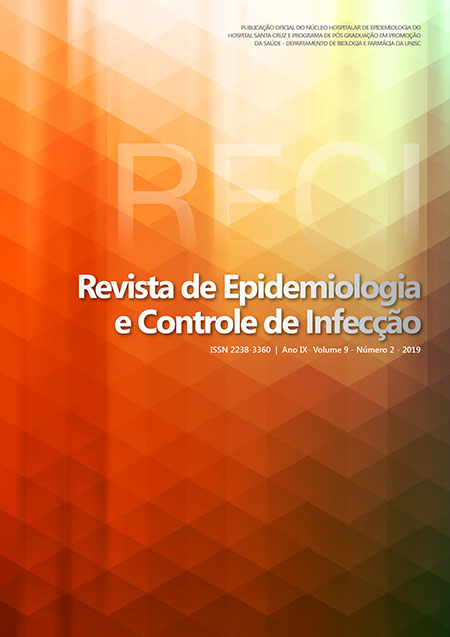Adherence to preventive measures versus incidence of ventilator-associated pneumonia
DOI:
https://doi.org/10.17058/reci.v9i2.12596Keywords:
Pneumonia associada à ventilação mecânica. Infecção hospitalar. Unidades de terapia intensiva. Cuidados críticos.Abstract
Background and Objectives: Ventilation-Associated Pneumonia (VAP) is the infection related to health care that most affects patients in mechanical ventilation admitted to the Intensive Care Unit (ICU), and prevention measures are necessary to ensure safe care. The objective of this study was to evaluate the adherence rate of the preventive actions of the nursing team for Ventilation-Associated Pneumonia after restructuring and application of the prevention protocol and to verify the incidence density rates of patients with VAP. Methods: Observational, longitudinal study of bundle adherence analysis after its restructuring, performed in a general adult ICU between May and November 2017. Sample for convenience with 154 patients on mechanical ventilation. Evaluated nursing care: oral hygiene with chlorhexidine 0.12%; high headboard; cuff pressure; and position of the filter. The intervention was continuous reinforcement of the team to carry out the preventive measures. Infection Control Service calculated monthly VAP rates for comparison. Results: The average adherence rate of preventive measures in 1,296 evaluations showed adequacy in: 94% filter position; 88.7% high bed; 77.3% oral hygiene with chlorhexidine 0.12%; and 91.7% cuff pressure control. Conclusion: With continuous monitoring and reinforcement, the preventive measures for VAP, performed by the nursing team, remained above 77%, with a concomitant decrease in the rate of VAP. Keywords: Ventilation-associated pneumonia. Cross infection. Intensive care units. Critical care.Downloads
Downloads
Published
How to Cite
Issue
Section
License
The author must state that the paper is original (has not been published previously), not infringing any copyright or other ownership right involving third parties. Once the paper is submitted, the Journal reserves the right to make normative changes, such as spelling and grammar, in order to maintain the language standard, but respecting the author’s style. The published papers become ownership of RECI, considering that all the opinions expressed by the authors are their responsibility. Because we are an open access journal, we allow free use of articles in educational and scientific applications provided the source is cited under the Creative Commons CC-BY license.


